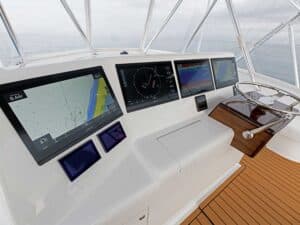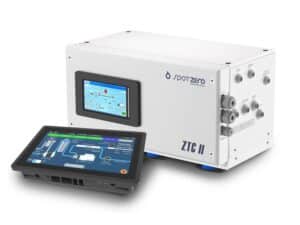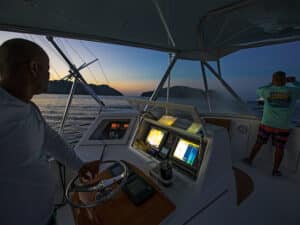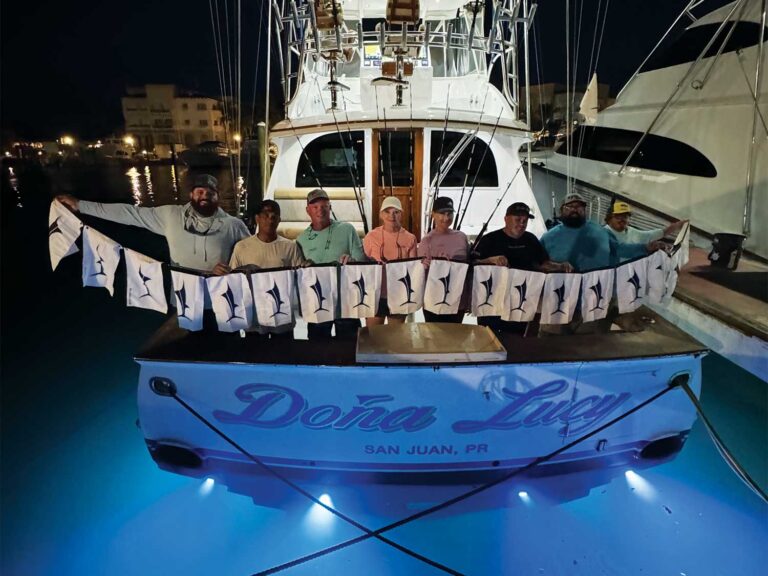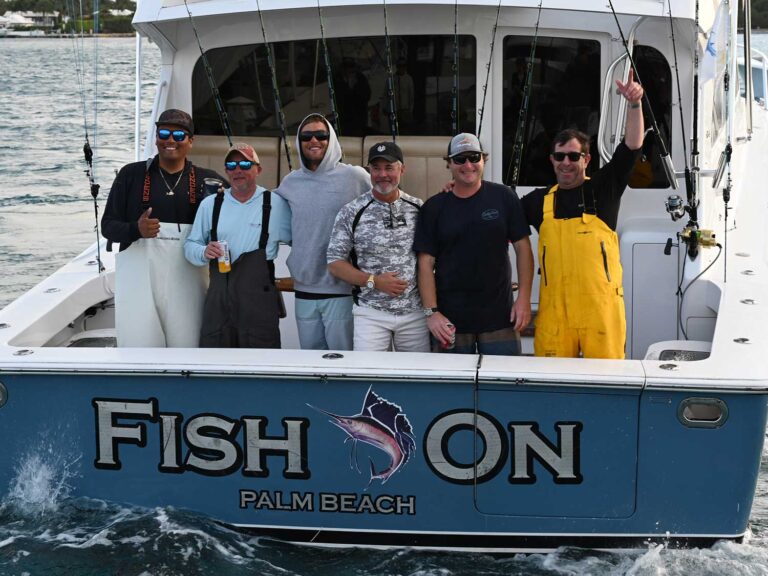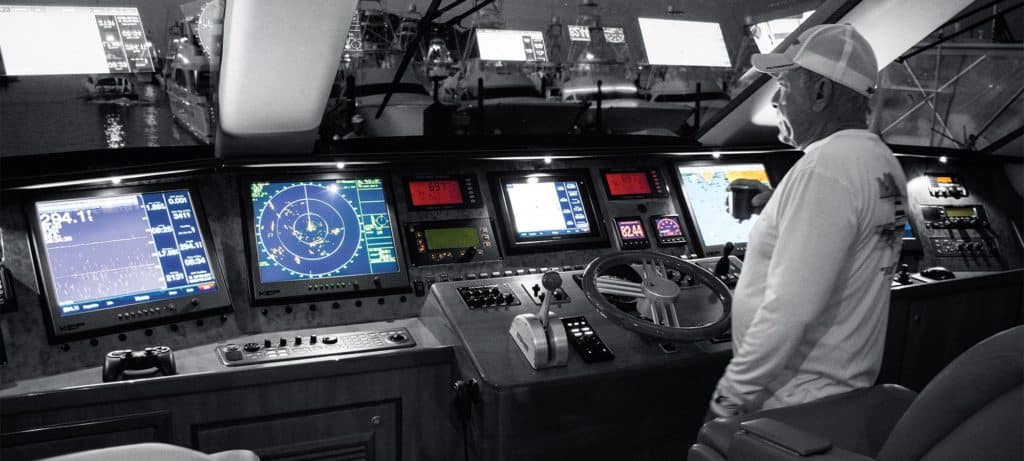
I have loved electronics ever since Lowrance/Eagle introduced its first handheld GPS, with about a hundred buttons on it, back in 1995. Before that, I took a celestial navigation course with a longtime buddy and his dad in 1988; we were planning to sail to Spain but never managed to pull it off. I always saw GPS as celestial, but with satellites instead of photon bombs in the sky. And it’s incredible to see how far the marine electronics industry has advanced.
Today’s multifunction displays are bigger, the processors are faster by a light-year and the functionality is more intuitive and practical than ever before. Sonar systems are on the verge of providing eyes-in-the-water clarity that just stuns the senses. Radar, too, is stepping away from traditional norms, as digital radar is providing longer range and superior resolution, along with reliable bird-finding auto settings.
Here are four electronics packages built from the most popular brands’ top-shelf equipment. So whether you’re updating the gear on an older boat or building a new one from scratch, feel free to dream a little.
Garmin with GPSMap 8624
Garmin might hold the largest market share in aviation electronics, and a similar share in the highly competitive marine navigation electronics market. To stay relevant in the aviation business, you must bring the most reliable products possible to the marketplace; Garmin applies that ethos to its marine segment too.
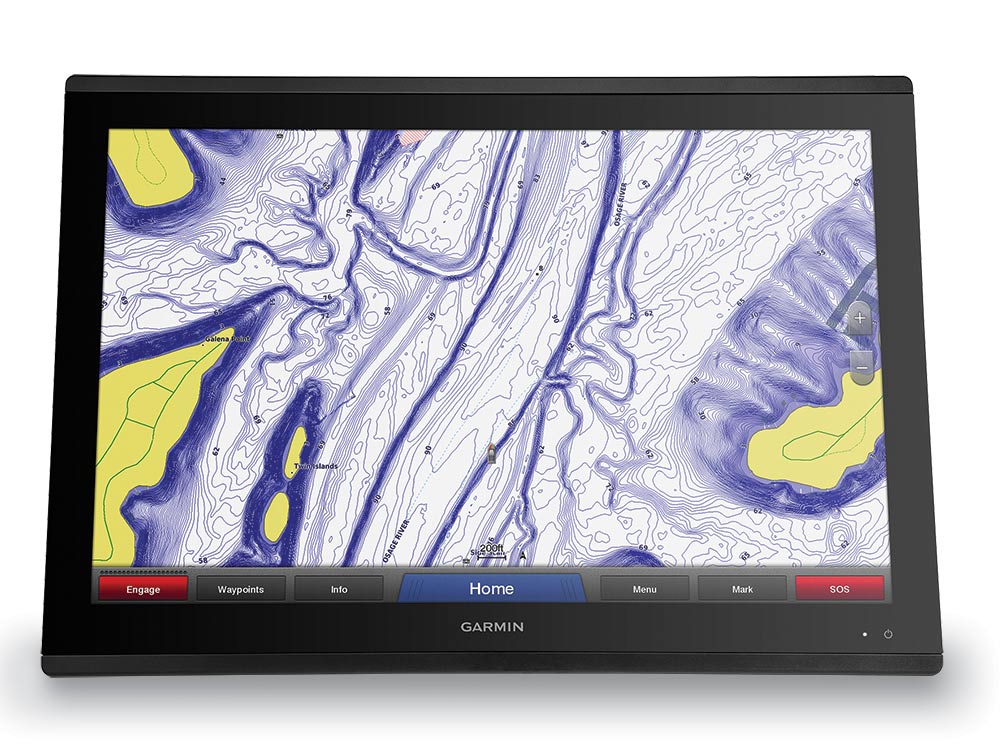
On the Bridge
In the Garmin dream suite, a pair of 24-inch GPSMap 8624s offers the ability to display six different systems on each display simultaneously in separate panes for optimum situational awareness. BlueChart G2 charting gives incredible detail to their mapping displays, and the system allows accurate radar overlay. In addition, we like the BlueChart G2’s ability to create custom sonar charts by recording soundings and displaying them on the chart. Arm the captain with one GRID armchair remote, and download the Garmin ActiveCaptain app to provide wireless chart-plotter control via smartphones for the crew. With the quatix 5 smartwatch, you can also monitor speed, depth, engine temperature, change course on the autopilot and more from your wrist.
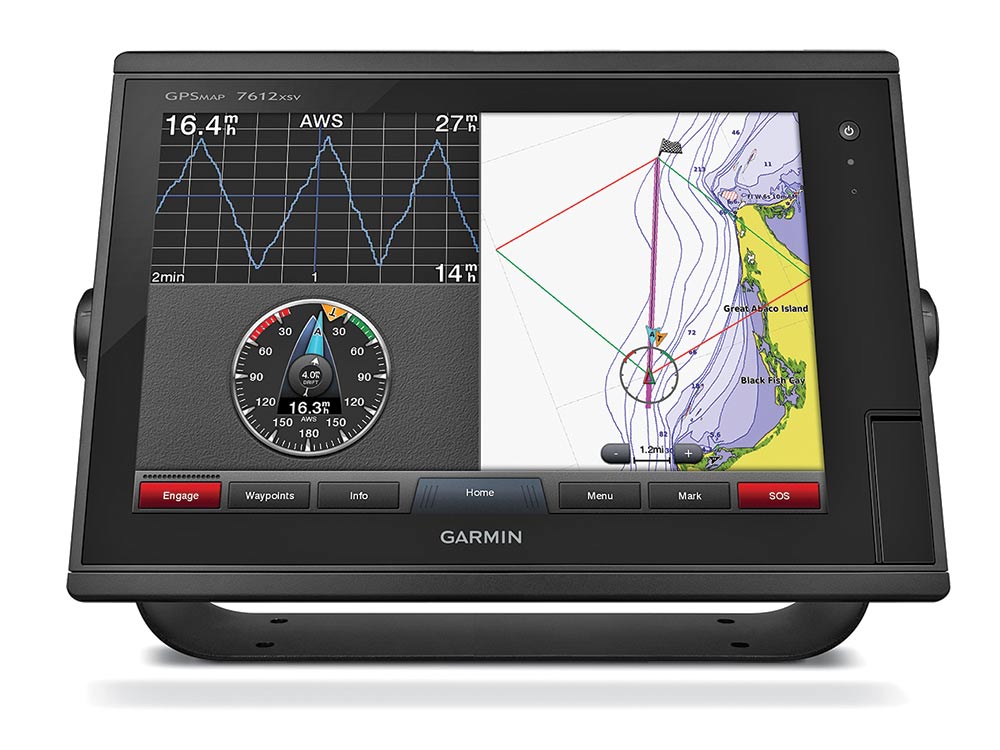
Salon, Tuna Tower and Cockpit
Choose two 12-inch 7612xsv displays and put one each in the tuna tower and in the cockpit. For the salon, feed the 8624’s HDMI output to your flat-panel television, turning it into a big-screen chart plotter; control what you see on it with the ActiveCaptain app.
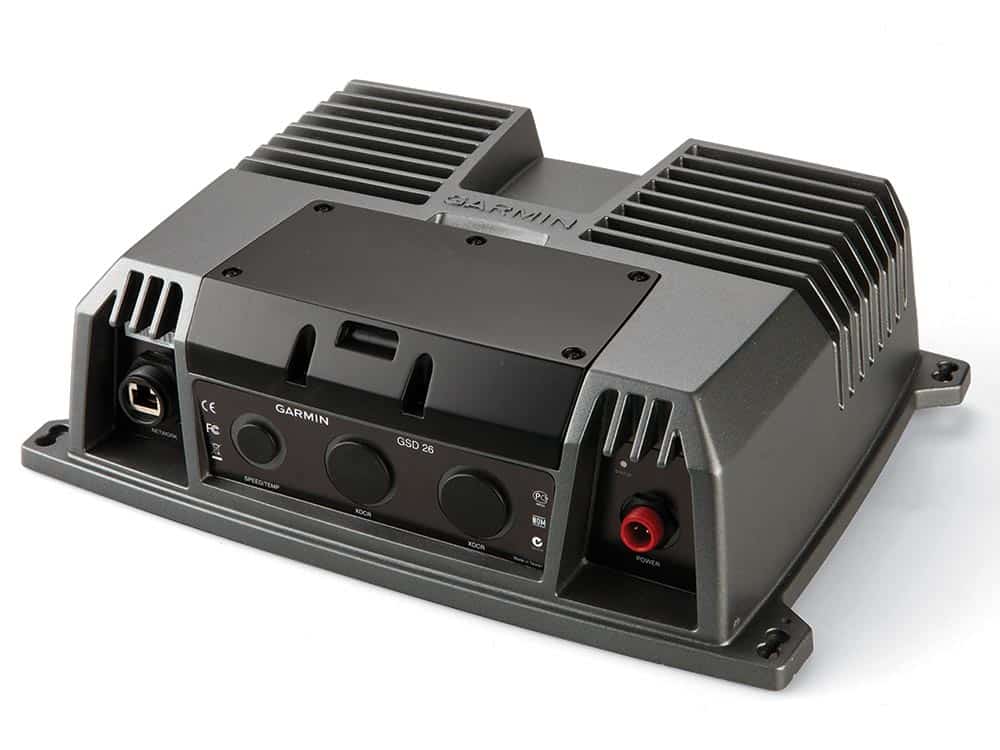
Into the Depths
Garmin is all business in the sonar department. First, the GSD 26 chirp sonar module allows the user to display two distinct sonar transducers. Using an R599LM for low and medium frequency and an R599LH for high frequency, the captain can sweep the water column from the surface to depths of up to 10,000 feet. The GSD 26 allows custom tuning of the frequencies to look at one single frequency or a range ideally suited to the species pursued.
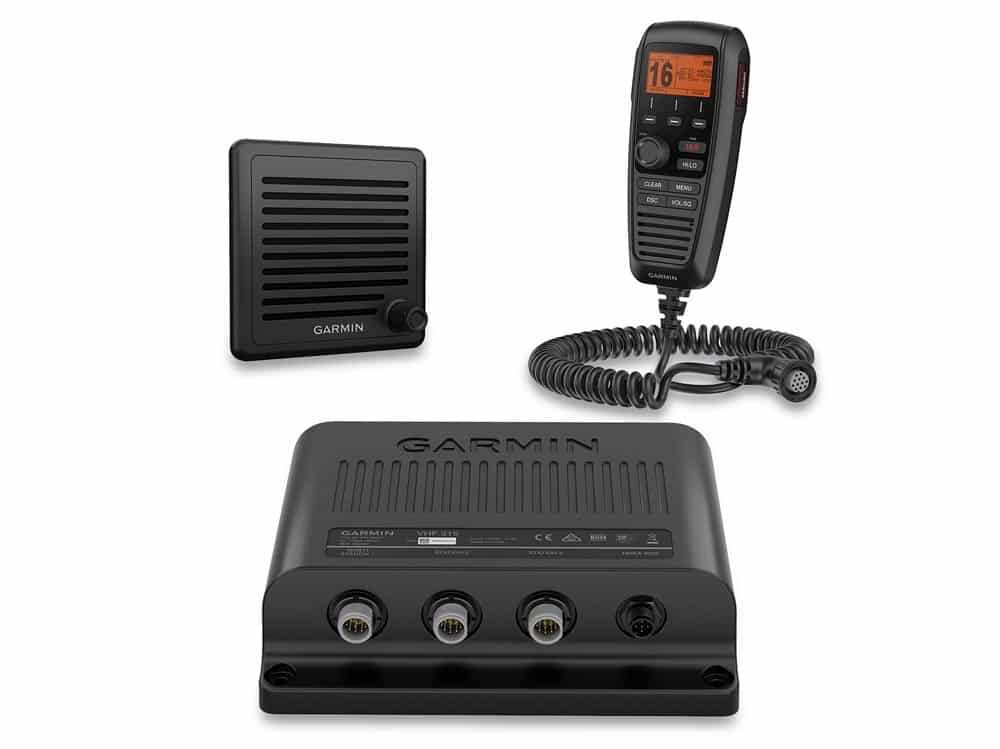
Communications
The VHF 315 marine radio is a black-box system, including a remote speaker and a GHS 11 wired handset. Add a handset in the tuna tower and one in the salon and cockpit for 360-degree communications from ship to ship, ship to shore and crew to captain. An AIS 800 automatic identification system module transmits and exchanges vessel data with all other AIS-equipped vessels in range, greatly reducing miscommunication and increasing safety.
Eyes Everywhere
The final key: Use Garmin’s Virb Ultra 30 Wi-Fi POV cameras to keep an eye on the engine room, salon or cockpit from the helm. The cameras also allow the captain to watch any potential blind spots while docking or maneuvering in close quarters.
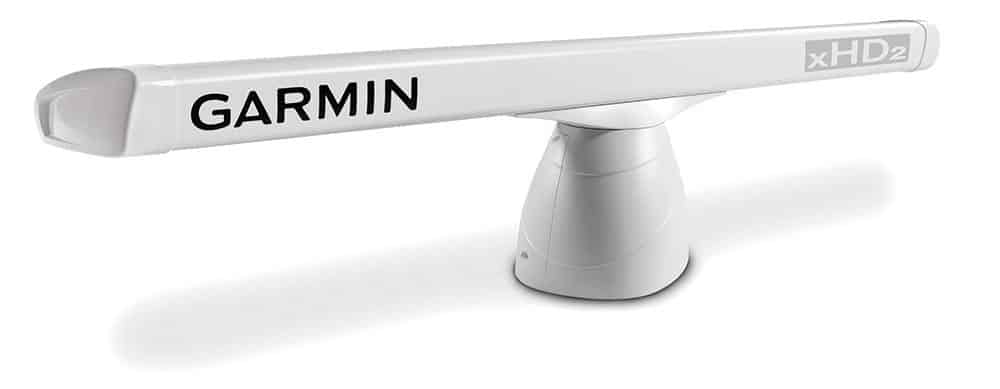
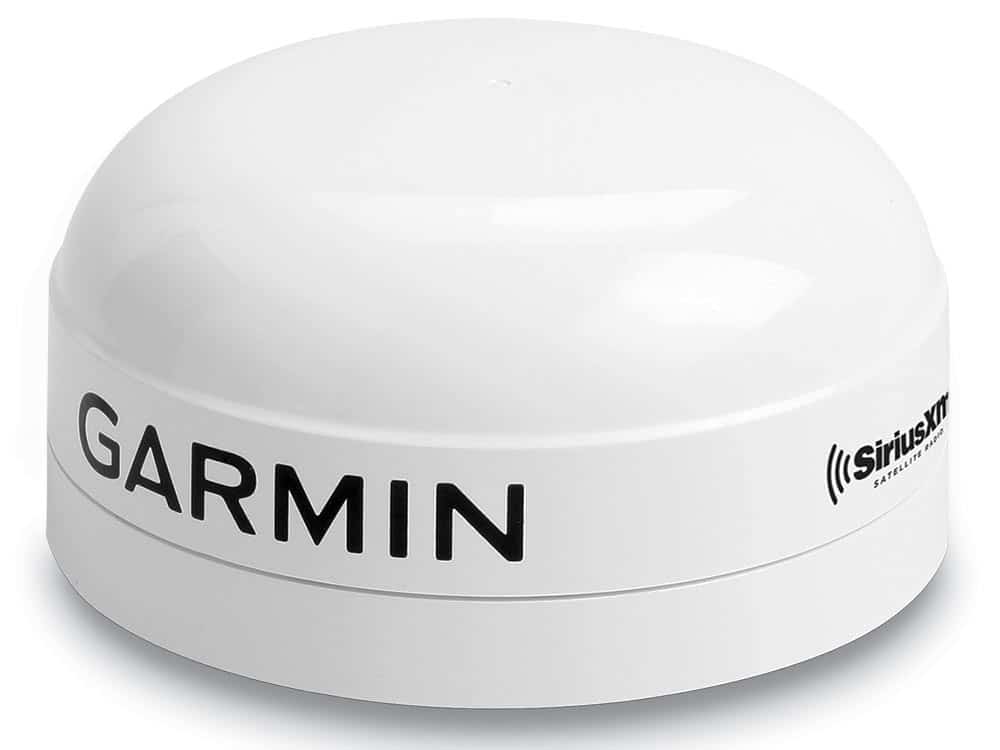
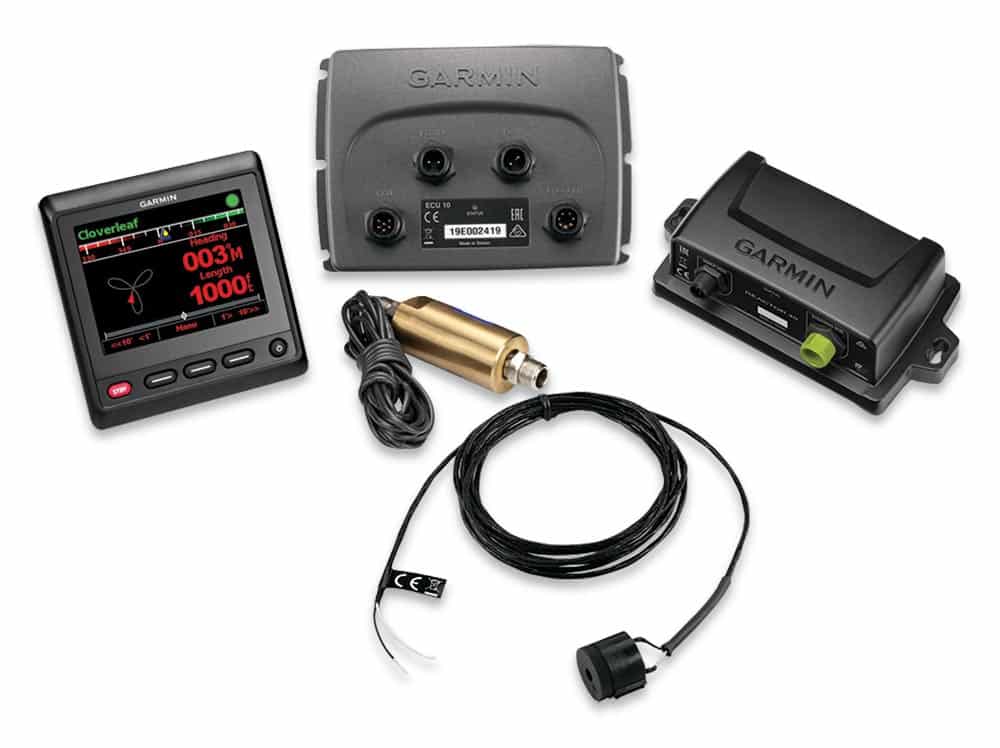
Raymarine with Axiom XL
Raymarine expanded its two-year-old Axiom series with the new Axiom XL touch-screen display for glass bridge installations. Sizes range from 15.6 inches to 24 inches. Redundancy is bliss, and larger is always better, so fit the most and largest screens possible into the space available. The Axiom XL waterproof displays feature proprietary glass screens and in-plane switching for responsive touch control and wider viewing angles.
The glass bridge system adds another element by providing on-screen engine-performance data. It requires an HS-5 network switch and ECI 100 engine interface to make it work, but once you do, you’ll never go back to analog gauges. Remote control also gives armchair comfort and complete management of the Axiom system without the user having to lean forward to touch the glass.
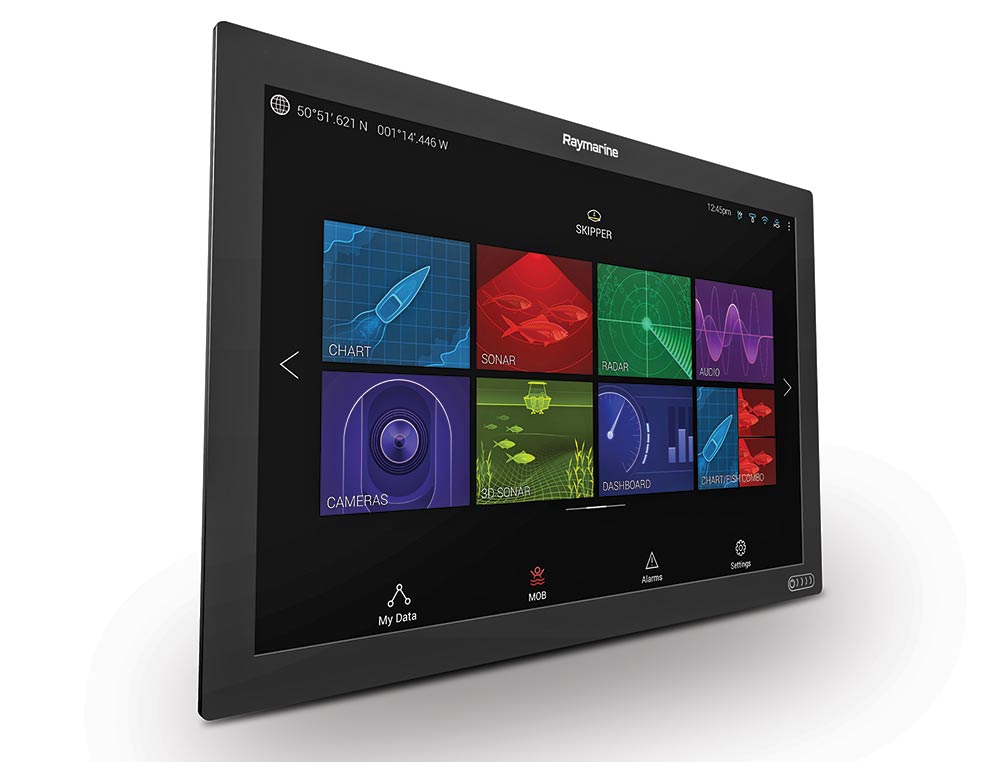
In the Salon
To keep the crew informed, run an HDMI cable to display the Axiom XL on a high-definition television in the salon, and use the RayControl app for either Apple or Android devices. This gives you a big-screen nav display in the salon, complete with deck cameras plus FLIR thermal imaging, if you go that route.
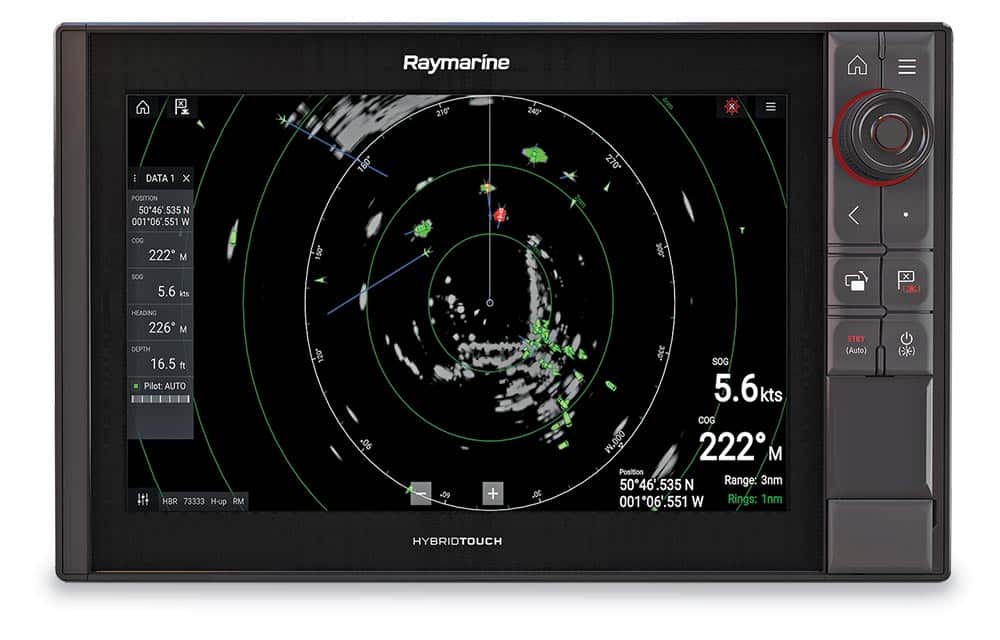
Cockpit and Tuna Tower
To keep the cockpit and tuna tower in tune with the surroundings, add the Axiom Pro 16 display in each station. They offer built-in tactile buttons — something the captain will appreciate in the tower and mates with fishy hands will like in the cockpit.
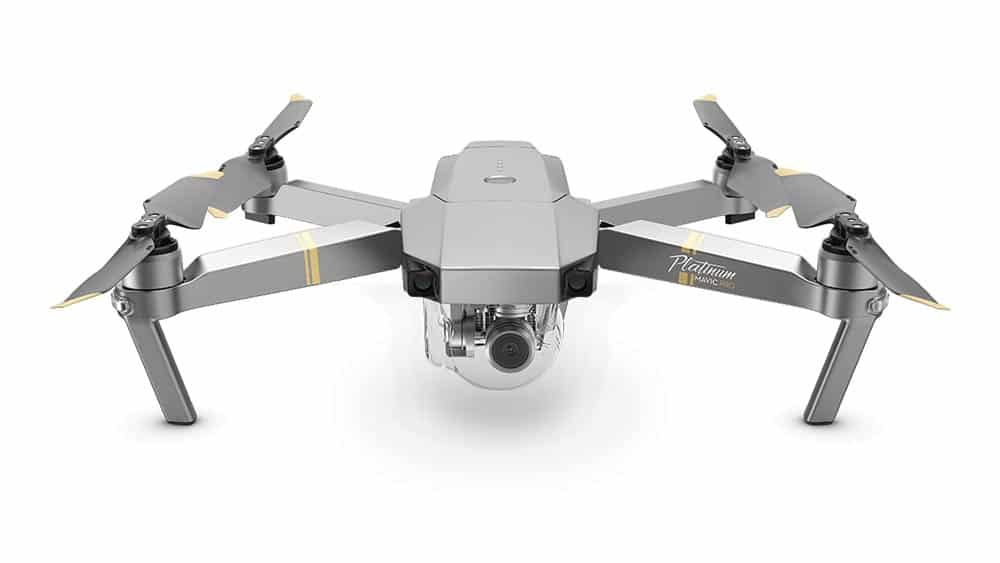
Lighthouse 3 Air Services
Raymarine’s Lighthouse 3 interface not only grants users ultimate control of navigation, sonar, radar and autopilot systems, it adds many handy apps, including Netflix, Spotify, Theyr, LED light functions for some brands, controls for Seakeeper gyrostabilization and digital switching. Now, unmanned aerial vehicle controls are also integrated into Lighthouse 3 so you can launch, steer and retrieve DJI Mavic airframes.
Beneath the Waves
The CP570 chirp sonar‘s two fully independent channels deliver faster target identification and up to 4 kW of combined output power. Couple it with Airmar’s R509 low-medium chirp transducer, and operate the CP570 on two transceiver channels. The Lighthouse 3 system allows the captain to select and display multiple sonar frequencies simultaneously to get the look you want with amazing detail in thousands of feet of water.
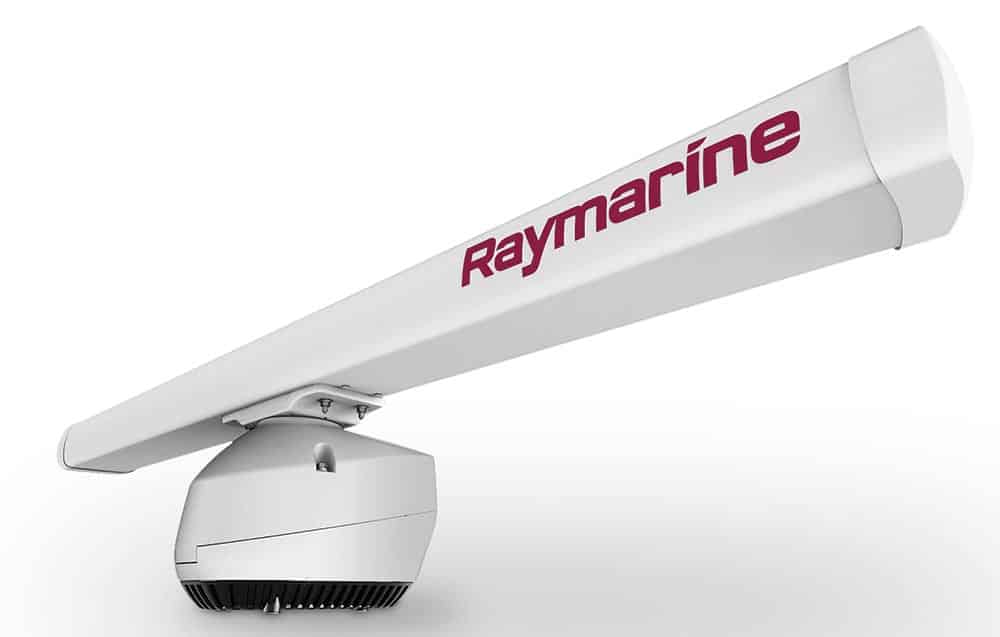
Eyes Above the Water
The Magnum high-performance radar is available in 4 or 12 kW power output options, and with either a 4-foot or 6-foot open-array option. It offers a maximum range up to 96 nautical miles for 12 kW models — ideal for bluewater vessels — and up to 72 nautical miles for 4 kW models. Snap on Bird Mode and instantly detect in-range birds and easily distinguish them from scatter. Add the FLIR M625CS thermal night-vision camera system with gyrostabilization; it can detect and zoom in on floating debris that radar will never spot, and its IR imaging is partnered with a low-light optical camera for incredible detail in minimal lighting.
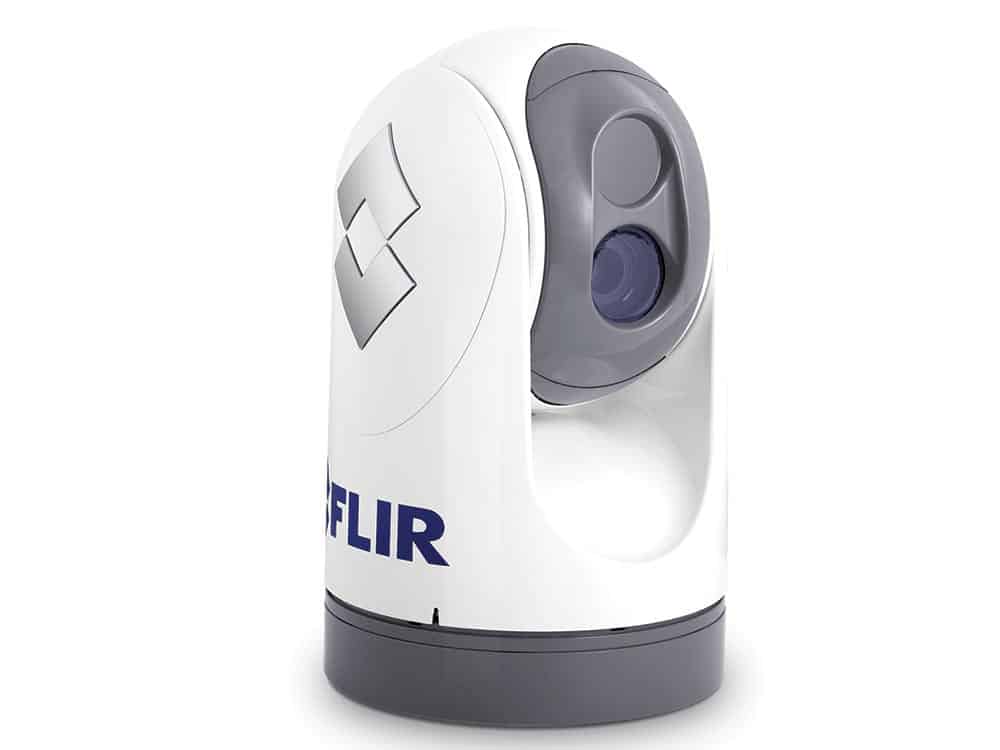
Surveillance
Install the CAM 220 bullet and CAM 200 eyeball cameras to keep an eye on the cockpit, salon and other areas. A FLIR AX8 camera in the engine room allows the captain to monitor engines for hot spots or other temperature anomalies that could signal trouble ahead.
VHF and AIS
Go with the Ray260 modular VHF radio with remote transceiver, speaker and handset for ship-to-ship communications; it is available with an integrated AIS receiver. The Ray90 and Ray91 VHF radios also support the optional second-station RayMic handset or the new wireless remotes for unlimited locations. This gives you full-function VHF and intercom capability from any location on board.
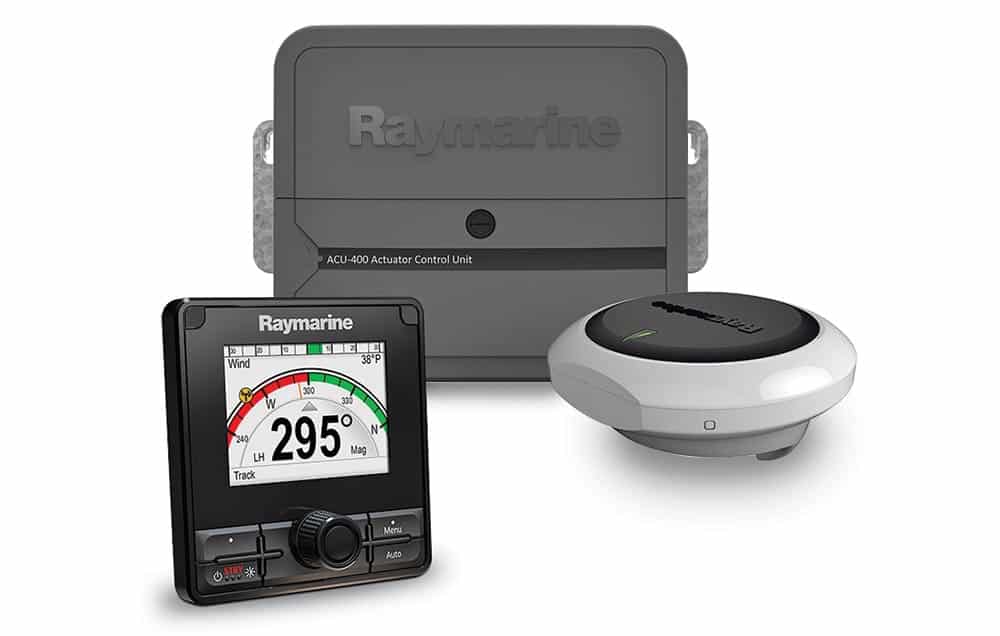
No Hands
The Evolution EV400 autopilot is that mate you don’t have to feed. Its system is supported by a nine-axis gyrostabilizer, which offers better heading control than a skilled and alert captain.
Entertain Me
The Axiom XL system supports SiriusXM satellite radio and XM weather overlay. For entertainment, Raymarine networks best with Rockford Fosgate systems, a brand with which it has a special partnership. For television, Raymarine’s 60STV antenna and a Dish Network multisatellite interface multiswitch offer access to Dish’s broad network of entertainment in port or at sea.
Furuno USA with TZT2BB
Furuno introduced the first touch-screen MFD more than six years ago and changed the nature of navigation equipment from that day forward. The TZT2BB is a powerful black box for Furuno’s NavNet TZtouch2 MFD that supports networked radars, fish finders, multibeam sonar, instruments and other sensors. Let’s put at least two 24-inch displays at the helm.
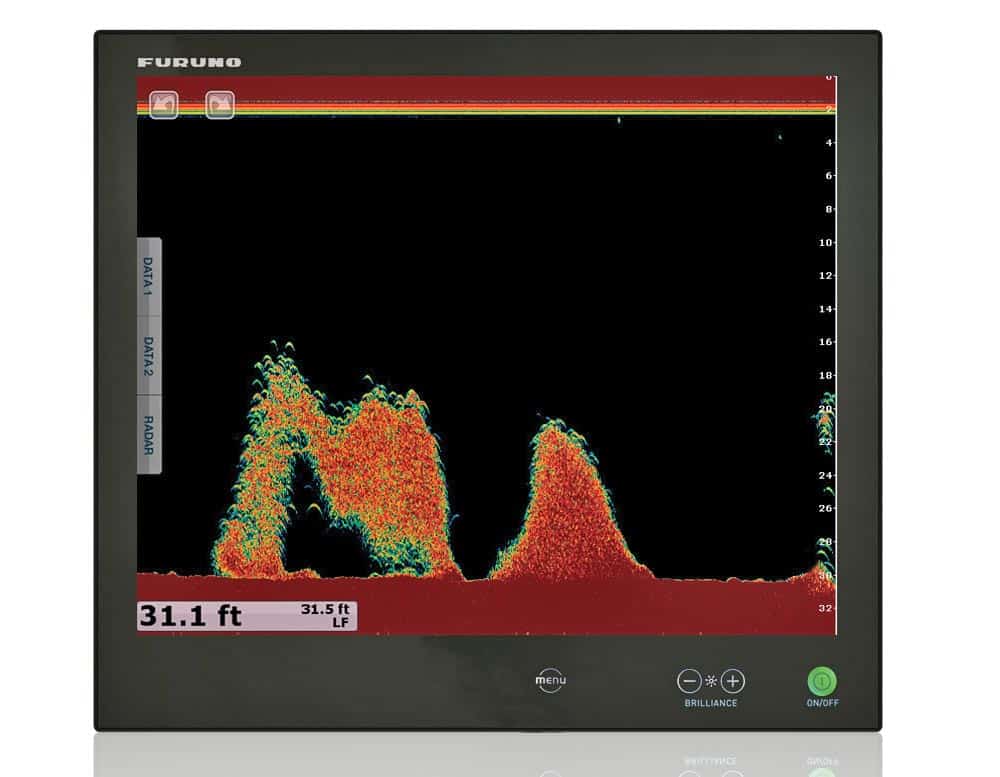
The TZT2BB is pre-loaded with raster, vector and fishing charts for the entire Western Hemisphere in a native 3D format, as well as free satellite photography for the entire United States. A single TZT2BB can also drive an external keyboard to control the entire system. An additional control option, the MCU004, which features a rotary knob/joystick control with eight dedicated buttons, is mounted near the captain’s chair, giving the skipper total control over the network from this single compact device. Use an HDMI output to the salon television so it pulls double-duty as an additional display.
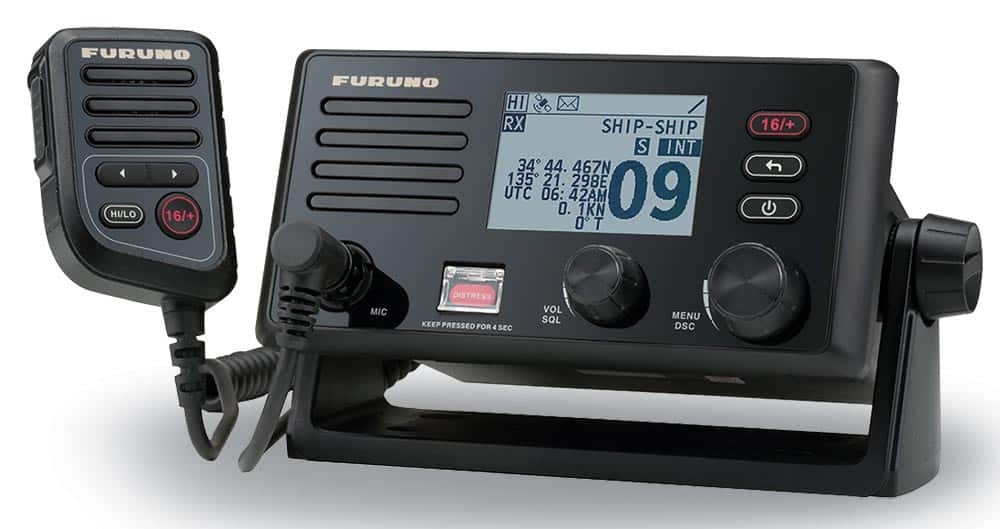
Radio Me
For communications, the bridge has an FM4800 VHF. It includes a GPS receiver providing position redundancy, and also a hailer, AIS receiver and intercom function. Its Listen Back feature is not to be underestimated. After activating the hailer to speak to the anglers in the cockpit or mates on the bow, the hailer speaker can act as a sound-gathering microphone to let the crew reply, giving them a hands-free way to respond.
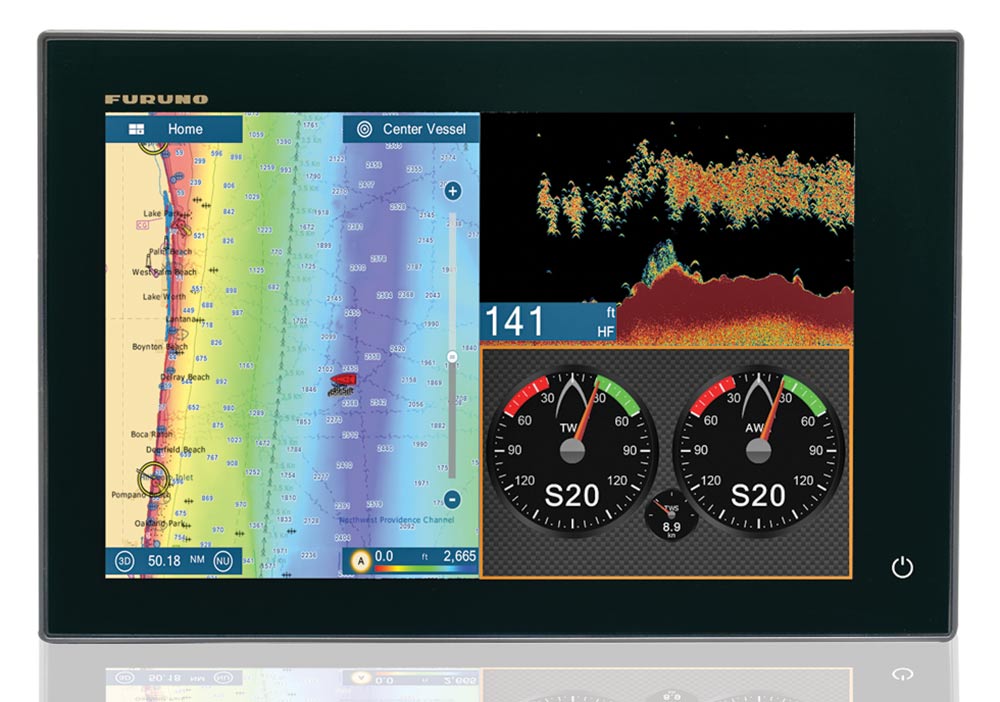
Tuna Tower and Cockpit
The tuna tower will sport a networked TZTL12F, a 12.1-inch NavNet TZT2 display capable of controlling anything connected to the network, including radar, autopilot and fish finder. A second-station handset gives us access to the functionality of the FM4800 VHF at the helm.
Good Hunting
Sonar is for hunting, and Furuno suggests three different types. The first two are the DFF1-UHD TruEcho chirp fish finder and the DFF3D multibeam sonar. The DFF1-UHD sweeps across 90 frequencies with each pulse, delivering more energy on target to display fish and structure with unparalleled clarity and resolution. The DFF3D sonar takes wide-beam sounding to unprecedented levels, showing fish and structure across a 120-degree port-to-starboard arc. Multiple display modes let the captain show multiple sonar devices simultaneously. Both of these sounder options utilize a single transducer. Add Furuno’s CSH8LMK2 full-circle scanning sonar to see fish distribution and seabed conditions 360 degrees around the boat, instantaneously. Its full-circle scanning speed is about half a second at 1,000-foot depth. And now you know why we want three big displays on the bridge.
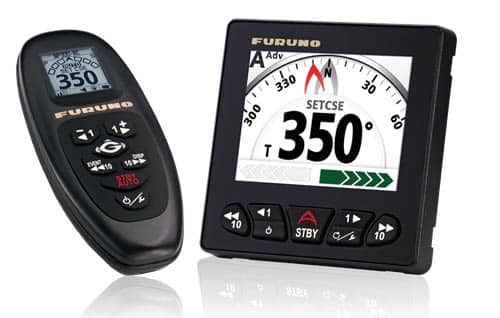
Hands-Free
The brand-new NavPilot 300 autopilot delivers precise steering control. The 4.1-inch color LCD is a cosmetic match to our Furuno helm, and with the new handheld gesture controller, the skipper can simply “point and shoot” in any direction around the vessel to set a new course.
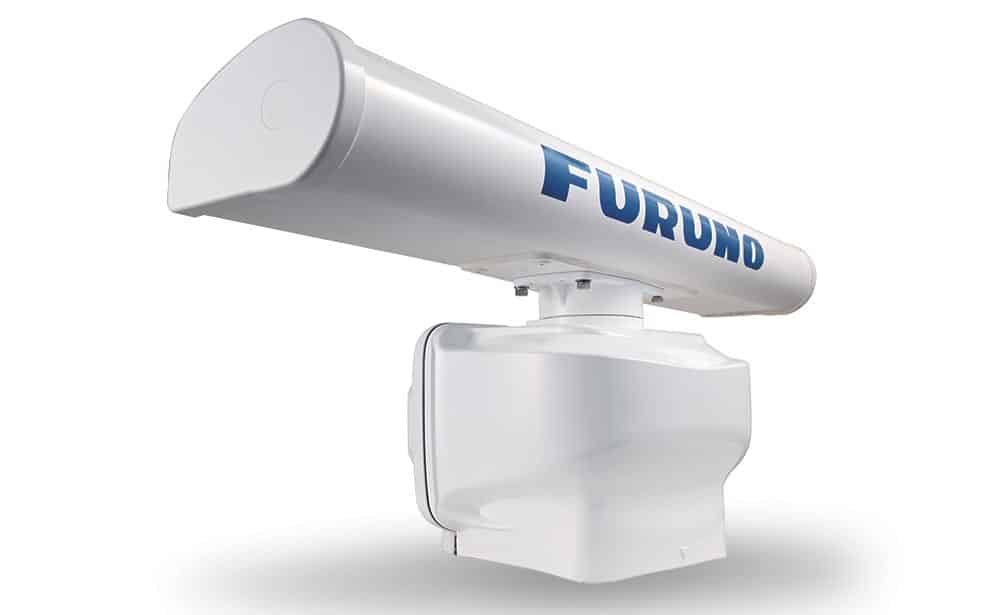
The Long, Stable View
Furuno’s DRS25AX X-class radar gives us over-the-horizon capability. This 25 kW radar features 96-nautical-mile range plus improved short-range target detection, an all-new low-noise motor and much lighter gearbox, and all-new operating features, such as Fast Target Tracking and Bird Mode. The SC33 satellite compass provides highly accurate position and attitude information, stabilizing our navigation, radar overlay and sonar displays.
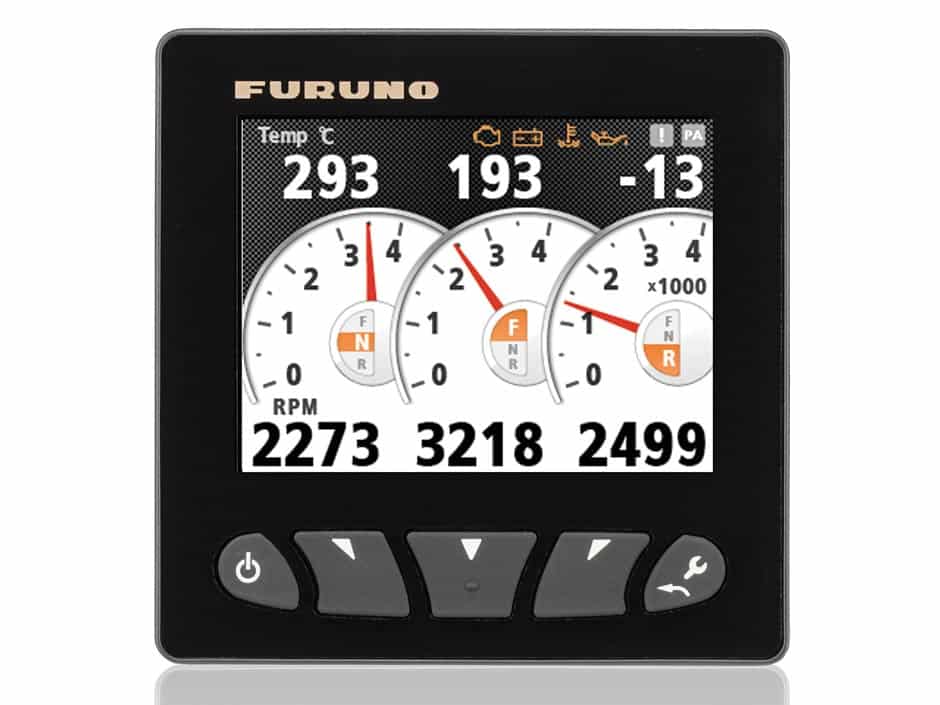
Simrad Yachting with NSO evo3 IPS
Simrad’s NSO evo3 IPS displays will be the backbone for this system. These ultrabright screens have in-plane switching and an arrangement of LCD pixels that allows a greater viewing angle so screens don’t black out when wearing polarized sunglasses or when viewed from side angles. NSO evo3 displays are available in 16-, 19- and 24-inch screen sizes. When possible, three displays allow for a clean, gauge-free bridge by running engine data through a pane on one display. Each NSO display can be divided in up to six panes, giving a broad situational awareness of location, depth, surrounding traffic, engine functions and more.
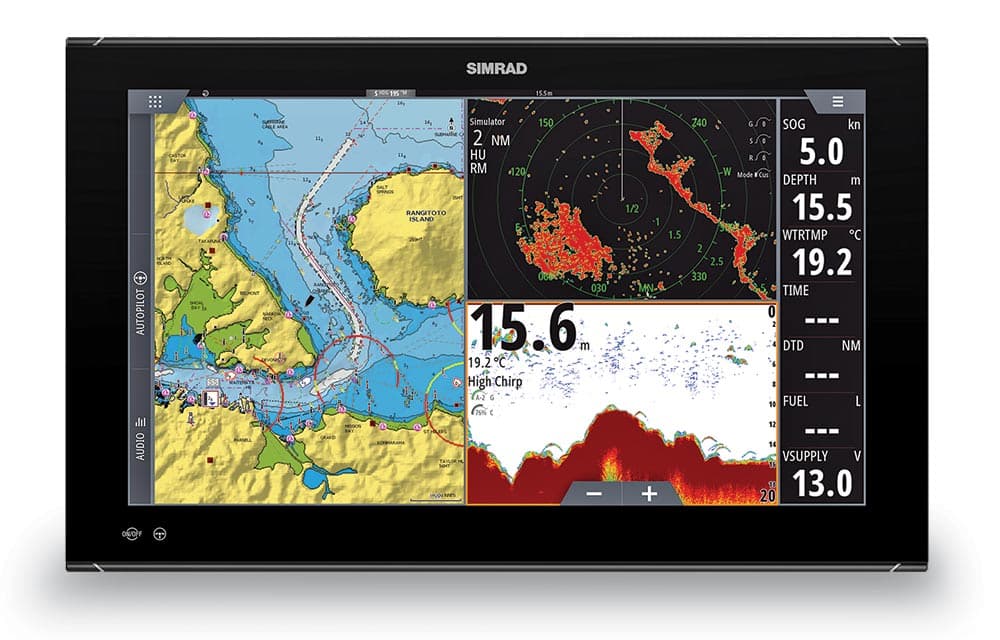
Salon, Cockpit and Tuna Tower
Install one 24-inch NSO evo3 IPS in the salon and we’ll add two more 12-inch displays, one in the cockpit for the crew and one next to the teaser reels for the captain so he can keep an eye on location, direction and, if watching a sonar pane, bait and fish below the surface. And we will tuck another NSO 12 up in the tuna tower, of course.
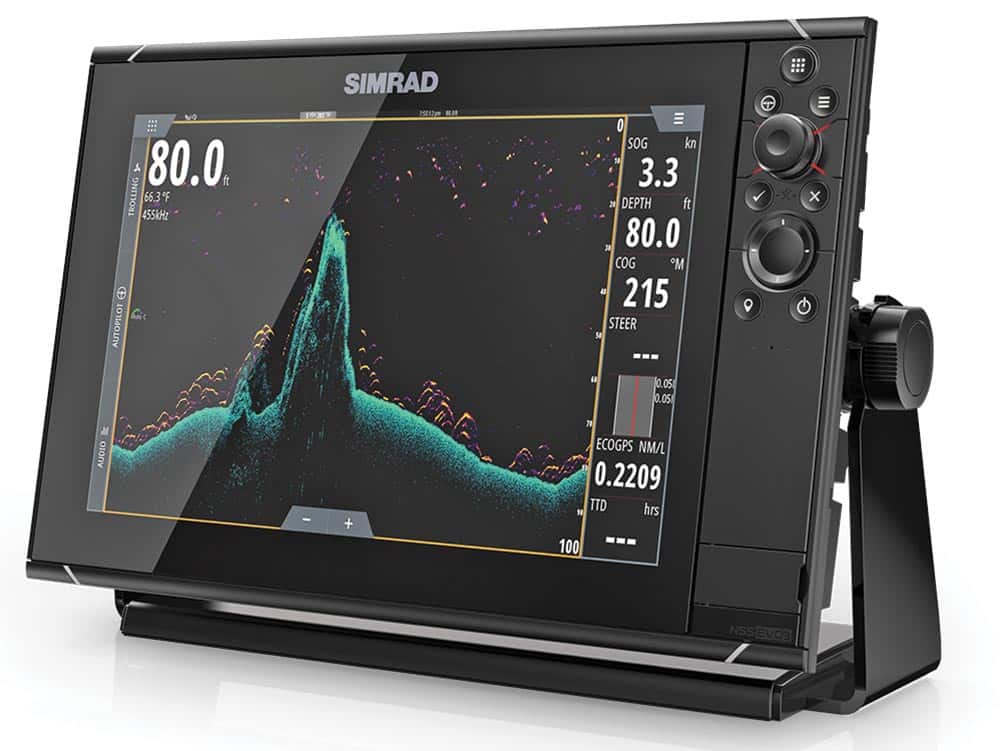
Down Below
A single black-box S5100 sonar offers three channels of independent sonar from three transducers, all in one box. Channel 1 will have an Airmar B285HW 25-degree wide-beam 1 kW chirp sonar for everyday cruising and nearshore fishing. Channel 2 will have the medium input from the Airmar PM411 ultrawide transducer; it is ideal for reading in very deep water, and great for swordfishing and deep-dropping in the Bahamas. Channel 3 will have the ultrawide 40-degree beam from the PM411. The 40-degree viewing angle helps captains see each and every billfish in the spread.
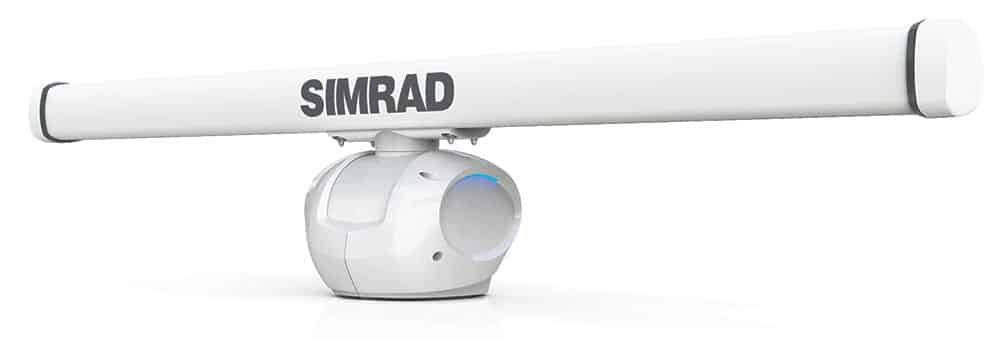
Up Above
Simrad offers two radars we’d like to see installed on the ideal sport-fisher. The first is the Halo 4, a 4-foot-array 25-watt solid-state radar that can be switched on and warmed up in under 30 seconds. For close-range navigation safety, we would go with a 4G radar with instant-on, high-resolution target detection, which allows it to pinpoint very small targets close by.
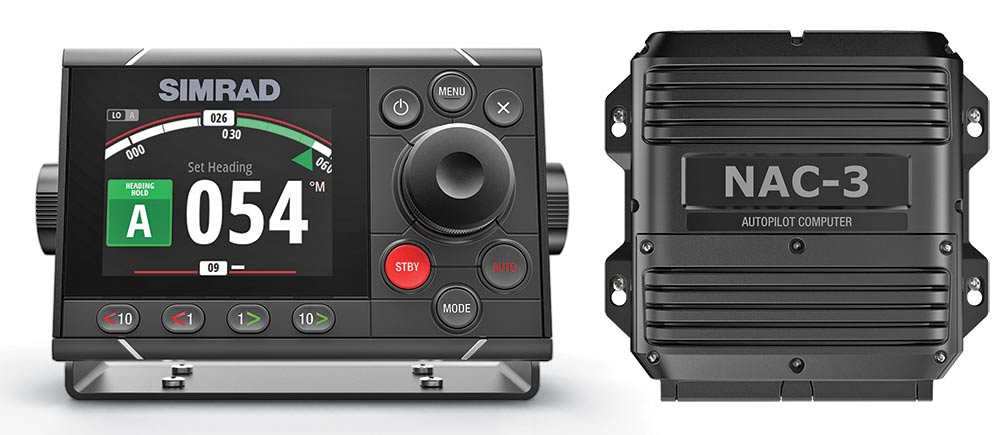
An Extra Crewmember
Trolling patterns can be programmed to keep the Simrad AP48 color display autopilot and NAC-3 pilot course computer on course and over fish. NMEA 2000 compatibility interfaces with the MFD to offer full autopilot control, a very useful feature to make quick, precise steering angle or route changes.
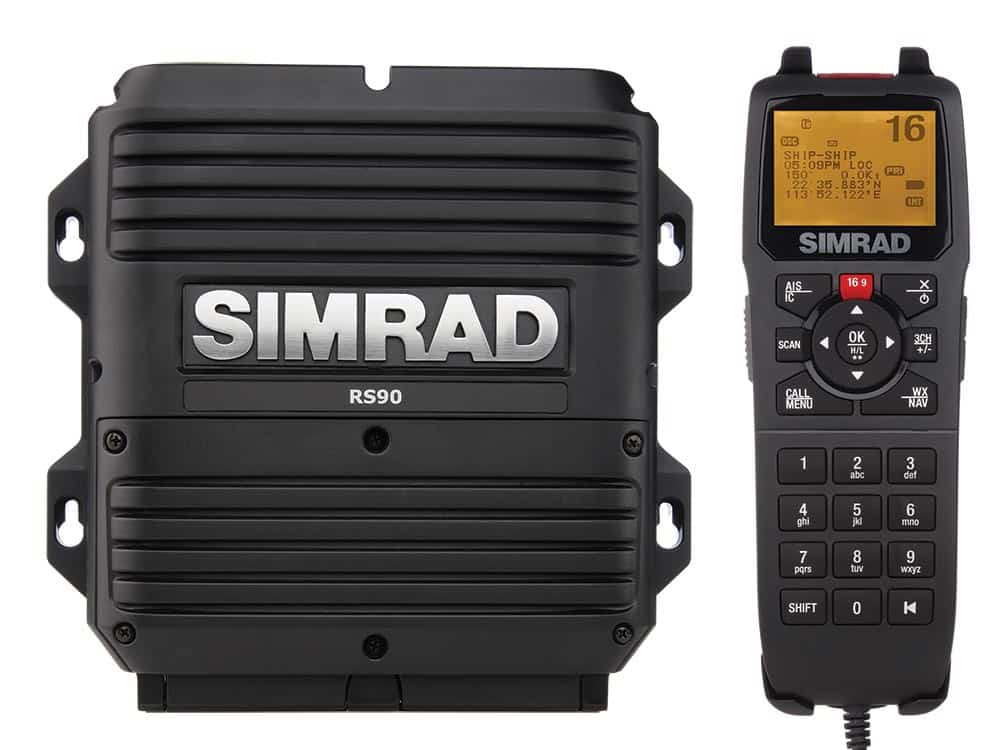
Ahoy There
Complete the communications package with the Simrad RS90 VHF. Add handsets to the salon, tuna tower and cockpit for easy communications. A V3100 Class B AIS transmits your vessel identity, position, bearing and speed, and receives reciprocal data from other vessels. Go stealth and switch off transmission to keep your fishing activities private.
Satellite Weather and Sound
Choose the WM-3 weather module to get Sirius weather alerts and satellite sea conditions in near real-time. Simrad systems are compatible with many NMEA 2000-compliant audio systems, such as Fusion and JL Audio.
